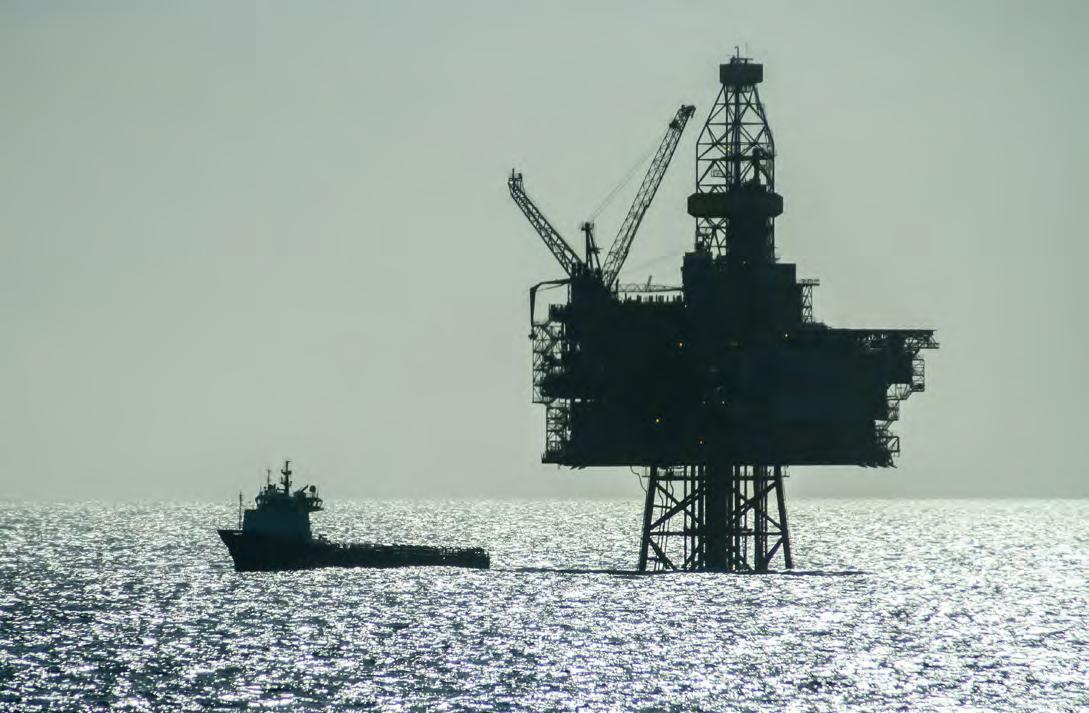
4 minute read
FEATURE Truss plan for energy independence fires up the oil and gas sector
Truss plan for energy independence fires up the oil and gas sector
There is also some good news for investment trusts in the renewable energy space
There were two positive developments for the UK oil and gas sector as new prime minister Liz Truss announced her plan to address the UK energy crisis.
First, she confirmed she wouldn’t be using a windfall tax on energy producers to help pay for the planned freeze on bills. Second, she announced plans to cut up sector red tape, including an immediate lifting of the moratorium on fracking, as part of a bid to make Britain energy independent by 2040.
This means the UK should be a net energy exporter rather than a net importer as has been since 2004. The 2040 target is instructive; these changes aren’t going to make a big difference in the short term as they will require long-term investment to bring to fruition.
The effective ban on fracking has been in place on safety grounds since 2019 when activity by private operator Cuadrilla caused stronger than expected tremors in Lancashire.
EMULATING THE US
The UK is looking to emulate the US whose own energy independence has been achieved in large part due to its successful exploitation of shale gas.
Estimates from the British Geological Survey, published in 2013, indicate there could be more than 1,300 trillion cubic feet (tcf) of natural gas trapped within shale rock in the Bowland-Hodder basin which straddles north and central England.
To put this in perspective UK natural gas consumption in 2021 totalled just 2.7 tcf. However, as the Cuadrilla episode illustrates, there are concerns about safety and fracking might not be popular in the communities which surround this prospective resource. This might make politicians’ newfound support for shale gas a bit shaky.
The main UK-listed shale player IGas Energy (IGAS:AIM) has switched its focus to conventional onshore oil and gas production. Its shares have performed very strongly in 2022 but last week fell as it responded to the removal of the fracking ban – with investors perhaps disappointed by a lack of detail on how the assets would be developed.
Up until now, very limited progress has been made on UK shale gas despite the big claims for its potential.
Conventional offshore oil and gas may also get a boost from a new North Sea licensing round – with more than 100 licenses on offer. The UK’s offshore energy industry body OEUK noted in a 2022 report that exploration and appraisal activity has been at ‘record low levels in recent years’ with just five exploration wells drilled in 2021 – the lowest number since the beginnings of the North Sea as
What is fracking?
The process involves injecting high-pressure chemically treated water and sand to crack tight shale rock formations and release trapped oil and gas.
Fracking operations have a significant footprint – sometimes encompassing as many as 15 large pumps covering an area as large as a football pitch and there is a requirement for a significant amount of water.

an oil and gas province 60 years ago.
Out to the end of this decade, OEUK has identified £26 billion worth of investment opportunities in the North Sea at various stages of progress. If they were all greenlit this would deliver four billion barrels of oil equivalent (boe) of oil and gas (37% gas and 63% oil) by 2030.
Parliament’s Climate Change Committee estimates consumption of eight billion boe during this time frame. Therefore, net imports would still represent 50% of consumption.
However, only £8.5 billion of these potential developments has been sanctioned and if no further work were to be signed off then production would, according to OEUK, decline at an average rate of around 15% per year until 2030. It notes this would mean the UK would be left dependent on international imports for around 80% of its gas needs and around 70% of its oil requirements.
RENEWABLES RELIEF
Where is the renewables space in all this? There was relief that its own profits would not be subject to a levy. Investment bank Stifel commented: ‘We recently said that the threat of a windfall tax was diminishing as Liz Truss had indicated she was not keen on the idea. However, the risk of the additional levy has been a cloud over the renewable funds and, while lower levels of inflation potentially means lower future uplifts to net asset values, this is good news overall for the sector, with the risk now ruled out.’
One lingering cloud hanging over renewables funds is a reported plan to make them agree new long-term contracts at fixed prices below current rates. Currently wind and solar farms built more than eight years ago can sell electricity at the
How UK oil and gas shares have fared in 2022
Company
IGas Energy Egdon Resources Union Jack Oil Angus Energy Hurricane Energy Europa Oil & Gas i3 Energy Jersey Oil and Gas Energean EnQuest Serica Energy Parkmead Harbour Energy Kistos Orcadian Energy UK Oil & Gas Investments IOG
Performance 2022 to date (%)
602 555 268 254 108 107 93 78 70 67 66 48 43 42 6 −15 −26
Table: Shares magazine • Source: SharePad, data to 12 September 2022
market rate and still claim subsidies.
A further risk which may put energy companies off from making big long-term capital investment decisions is a change of government which could result in much less favourable fiscal and regulatory arrangements for the industry.
An election is expected in 2024 and some current polls have the Labour Party, which made a strong case for a windfall tax on the sector’s so-called ‘excess profits’, enjoying a double-digit lead over the Conservatives.
By Tom Sieber Deputy Editor










